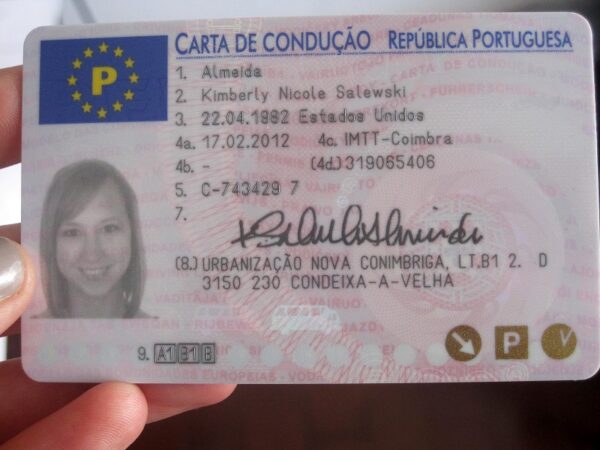Understanding the Driving License Process: A Comprehensive Guide
Navigating the process of acquiring a driving license can be a challenging experience for many people. Whether one is a novice applicant or a seasoned driver relocating to a new state or nation, comprehending the steps associated with getting a driving license is important. This post aims to illuminate the driving license process, outline the key steps included, and offer important insights along the way.
The Importance of a Driving License
A driving license is more than simply a piece of plastic. It serves a number of important functions, consisting of:
- Proof of Identity: A driving license often acts as an official type of recognition, beneficial for different circumstances such as travel and banking.
- Legal Authorization to Drive: A driving license validates that a person has passed the necessary tests to operate a car safely.
- Compliance with the Law: Driving without a license is unlawful in the majority of jurisdictions, leading to fines and legal consequences.
- Insurance and Liability: Most insurer need a valid driving license to issue a policy, protecting both the driver and others on the roadway.
Steps Involved in Obtaining a Driving License
Acquiring a driving license usually involves several essential steps. While the specifics may differ based upon place, the following is a basic overview of the process:
1. Comprehending the Requirements
Before a private begins the driving license application process, they should comprehend the requirements stated by their regional Department of Motor Vehicles (DMV) or comparable authority. Common requirements include:
- Minimum Age: Most areas require applicants to be a minimum of 16 years of ages, though this can vary.
- Evidence of Identity: Identification documents such as a birth certificate or passport are normally needed.
- Residency: Applicants should frequently reveal evidence of residency in the location where they are using.
2. Take a Driver Education Course (if needed)
In lots of locations, specifically for teens, a chauffeur education course is needed. These courses generally consist of both class direction and behind-the-wheel training, covering:
- Driving laws and policies
- Safe driving practices
- Protective driving methods
Completion of such a program might be necessary before looking for a learner's license or a full driving license.
3. Get a Learner's Permit
The majority of jurisdictions require brand-new chauffeurs to very first get a student's permit. This license allows individuals to practice driving under certain conditions, normally with a licensed grownup in the guest seat.
To acquire a learner's permit, candidates normally require to:
- Pass a written understanding test covering traffic laws and signs.
- Provide the required documents, such as proof of identity, residency, and completion of a chauffeur education course (if relevant).
4. Practice Driving
When the learner's license is acquired, the applicant can begin practicing driving. States might have particular requirements, such as:
- Minimum number of practice hours (e.g., 50 hours with 10 hours during the night).
- Adhering to constraints on driving alone or throughout specific times.
5. Set up and Take the Driving Test
After meeting the practice requirements, the next action is to schedule and take the driving abilities test. The driving test examines both understanding and useful skills in real-world driving circumstances, including:
- Parallel parking
- Lane modifications
- Following traffic indications and signals
- Handling intersections and highway driving
6. Pay the Fees
Once the driving test is successfully completed, candidates will typically require to pay an associated fee to get their driving license. The cost varies by area and might cover the cost of photo-taking, processing, and issuance.
7. Receive the Driving License
After finishing all the above steps and paying the needed costs, candidates will get their driving license. In most cases, they will be provided a short-term license while waiting for the official card to arrive by mail.
Tips for a Smooth Licensing Process
To ensure a smooth and effective driving license application process, potential chauffeurs need to consider the following tips:
- Prepare for the Written Test: Study your area's motorist handbook and take practice tests offered online.
- Practice Driving with a Licensed Adult: Gain as much real-world experience as possible before the driving test.
- Be Punctual: Arrive early for your driving test to relieve tension.
- Stay Calm During the Test: Remember that the trainer is there to assess your driving skills objectively.
Frequently Asked Questions (FAQs)
1. How long does it require to get a driving license?
The timeline can differ widely depending on the place and the applicant's preparedness. Typically, from starting the application process to receiving the license can take anywhere from a couple of weeks to a few months.
2. What documents do I need to make an application for a driving license?
Common documents required consist of:
- Proof of identity (birth certificate or passport)
- Social Security number (if suitable)
- Proof of residency (utility expense or lease contract)
3. Can I get a driving license if I have a rap sheet?
It depends on the nature of the offense and the laws in your jurisdiction. It's suggested to talk to the regional DMV to understand any limitations based on criminal history.
4. Do I require to take a composed test if I have experience driving in another state or nation?
Usually, people with a valid driving license from another region might not need to take the composed or driving tests. Nevertheless, Venda De Carta De Condução and verification might be required.
5. How can I prepare for the driving test?
Practicing driving under numerous conditions, evaluating road signs, and taking mock tests can significantly assist in preparation for the driving skills test.
The driving license process is a vital initiation rite for numerous people, providing the flexibility and responsibility of driving a lorry. By understanding the steps involved, preparing properly, and following regional policies, aspiring motorists can navigate the journey to receiving their driving license with confidence.

